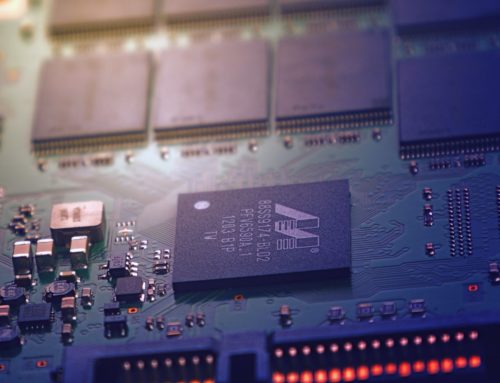In a world where size seems to matter, cars have been steadily growing in size over the years, dominating roads with their commanding presence. We find ourselves surrounded by behemoth metal bodies, daunting enough to make even the most fearless pedestrians question their own safety. But amidst this automotive trend, a glimmer of hope emerges – the prospect of smarter software paving the way for a safer future. Can we rely on innovative technology to counterbalance the substantial bulk of these modern machines? Join us on a journey where creativity and neutrality intersect to explore the intriguing relationship between size, intelligence, and safety on the roads.
Table of Contents
- 1. The Road Giants: Cars Are Growing in Size, But at What Cost?
- 2. Driving the Future: Software’s Role in Enhancing Safety in Bigger Cars
- 3. Size Matters: The Impact of Large Vehicles on Road Safety
- 4. Harnessing Technology: How Intelligent Software Can Revolutionize Car Safety
- 5. Beyond Size: Exploring the Potential of Smarter Software in Ensuring Safe Roads
- 6. Balancing Strength and Security: Can Software Counterbalance the Growing Size of Cars?
- 7. Unleashing the Potential: The Intersection of Size and Intelligence in Modern Vehicles
- 8. Reimagining Safety: Examining the Role of Advanced Software in Taming the Growing Beast on the Roads
- Q&A
1. The Road Giants: Cars Are Growing in Size, But at What Cost?
As the years go by, cars on our roads seem to be getting bigger and bigger. Gone are the days of compact vehicles that effortlessly maneuvered through narrow streets. The road giants have taken over, but is this increase in size coming at a cost?
One of the main concerns surrounding the growing size of cars is the impact on the environment. Larger vehicles tend to be less fuel-efficient, guzzling more gas and emitting higher levels of greenhouse gases. With the ever-increasing threat of climate change, the carbon footprint of these road giants cannot be ignored. Additionally, the bigger the car, the more space it occupies on the road, contributing to traffic congestion and reducing the overall efficiency of our transportation systems.
- Increased fuel consumption
- Higher greenhouse gas emissions
- Traffic congestion
On the other hand, proponents of the road giants argue that larger cars offer enhanced safety features and higher passenger comfort. With greater presence on the road, these vehicles can provide a sense of security for the driver and passengers. Additionally, ample space in these cars allows for a smoother and more comfortable ride, especially during long journeys. However, it’s essential to weigh these potential benefits against the environmental and societal costs associated with larger vehicles.
While big cars undoubtedly have their advantages, the growing trend raises questions about the long-term consequences. As we marvel at the sleek design and majestic presence of these road giants, it is crucial to consider the practicality, efficiency, and sustainability of increasing their size. As drivers, consumers, and advocates for a better future, it is our responsibility to explore alternatives and find a balance between our love for oversized vehicles and the need to protect our environment.
2. Driving the Future: Software’s Role in Enhancing Safety in Bigger Cars
In today’s rapidly evolving world, software has become an indispensable part of our daily lives. As technology advances, it also plays a pivotal role in enhancing safety in larger vehicles, ensuring a safer future on the roads. The integration of advanced software systems in bigger cars has revolutionized the way we drive by providing an array of safety features that were previously unimaginable.
From collision detection to driver assistance, innovative software solutions are transforming the driving experience. Here are some key ways in which software is reshaping safety in bigger cars:
- Automated Emergency Braking (AEB): Software algorithms constantly monitor the road and can automatically apply brakes to prevent or reduce the impact of certain collisions.
- Blind Spot Detection: Utilizing sensors and software, vehicles can now detect and warn drivers about objects in their blind spots, reducing the likelihood of accidents during lane changes.
- Lane Keeping Assist: Software systems can actively monitor a vehicle’s position on the road and provide gentle steering corrections to prevent unintentional drifting or lane departures.
- Adaptive Cruise Control: By utilizing software algorithms, this feature maintains a safe distance from the vehicle ahead, adjusting the car’s speed accordingly.
These remarkable software advancements demonstrate how technology is redefining safety standards in bigger cars, creating a future where accidents are minimized, and lives are protected. As software continues to evolve, we can expect even more innovative solutions to further enhance our driving experience, making our roads safer for everyone.
3. Size Matters: The Impact of Large Vehicles on Road Safety
When it comes to road safety, the size of vehicles plays a crucial role, often dictating the extent of potential damages. Large vehicles, such as trucks and buses, may command the roads with their powerful presence, but their size can also make them more prone to accidents. Here, we delve into the impact of these towering behemoths and their implications for road safety.
1. Limited visibility: One of the main concerns with large vehicles is their limited visibility. Due to their size, drivers of these vehicles often have blind spots that can obstruct their view of smaller cars, motorcycles, or pedestrians. This limited visibility poses a significant risk, increasing the likelihood of accidents, especially when changing lanes or making turns. To mitigate this issue, large vehicle drivers should adopt defensive driving techniques such as checking mirrors frequently and using technology like blind spot monitors to enhance their awareness.
2. Increased stopping distance: The sheer weight and momentum of large vehicles demand more time and space for braking. As a result, the stopping distance for these vehicles is considerably longer compared to smaller ones. This longer stopping distance can pose challenges while navigating busy traffic or unexpected obstacles on the road. It is essential for drivers of large vehicles to maintain proper following distances to accommodate these limitations and minimize the risks of rear-end collisions.
4. Harnessing Technology: How Intelligent Software Can Revolutionize Car Safety
In today’s rapidly advancing technological world, the automotive industry has been able to harness the power of intelligent software to revolutionize car safety like never before. With the integration of cutting-edge technology, vehicles are becoming safer and more efficient, providing drivers and passengers with peace of mind on the road.
One of the most remarkable advancements in car safety is the development of advanced driver assistance systems (ADAS). Equipped with intelligent software, these systems use sensors and cameras to monitor the surroundings of the vehicle, alerting the driver to potential collisions and even applying brakes autonomously if necessary. This has proven to be a game-changer, significantly reducing the number of accidents caused by driver error.
Moreover, another area where technology has made a profound impact on car safety is through the implementation of artificial intelligence (AI) systems. These AI-powered solutions revolutionize the way vehicles interact with their surroundings, making them capable of identifying and adapting to various situations on the road. For instance, AI can analyze data from traffic flow and adjust the vehicle’s speed and distance to maintain safe driving conditions. Additionally, AI-powered algorithms can analyze driver behavior to detect signs of fatigue or distraction, alerting them to potential hazards and increasing overall safety on the road.
5. Beyond Size: Exploring the Potential of Smarter Software in Ensuring Safe Roads
In today’s fast-paced world, technology is constantly evolving, and its impact on road safety cannot be overlooked. Beyond the physical parameters of road infrastructure, there lies a vast potential in the realm of smarter software that can ensure safer roads for everyone. Here are some key areas where technology can make a significant difference:
1. Intelligent Traffic Management:
- Smart traffic signals that adapt to real-time traffic conditions, reducing congestion and enhancing traffic flow.
- Dynamic lane management systems that automatically adjust lane width and direction based on traffic volume.
- Real-time traffic monitoring and analysis to identify accident-prone areas and deploy resources accordingly.
2. Predictive Maintenance:
- Smart software that continuously monitors road conditions, detecting any signs of deterioration or potential hazards.
- Using data analytics to predict maintenance needs, enabling proactive repair and preventing accidents caused by road infrastructure issues.
- Automated systems that schedule and track road maintenance activities, ensuring efficient utilization of resources.
The possibilities are endless when it comes to leveraging smarter software to complement physical road safety measures. By harnessing the power of technology, we can aspire to have safer roads that not only meet the demands of today but also prepare us for the challenges of tomorrow.
6. Balancing Strength and Security: Can Software Counterbalance the Growing Size of Cars?
As cars have evolved over the years, one striking change is their growing size. Nowadays, it’s not uncommon to see massive SUVs, vans, and trucks dominating the roads. While larger vehicles offer more space and a sense of power, they also come with their own set of challenges. Balancing strength and security has become a crucial consideration for manufacturers, and software has emerged as a potential solution.
1. Advancements in safety systems: Software plays a pivotal role in ensuring the security of larger vehicles. Modern cars are equipped with sophisticated safety systems that utilize software to monitor various aspects of the vehicle’s performance. These systems can detect potential collisions, adjust traction control, and even assist with lane-keeping. By constantly analyzing data and making real-time adjustments, software helps counterbalance the additional risks associated with larger cars, enhancing safety for both the driver and passengers.
2. Advanced driver-assistance systems (ADAS): Software-driven ADAS features have gained considerable prominence in recent years. These systems use sensors, cameras, and software algorithms to assist drivers in maneuvering their vehicles. From adaptive cruise control that maintains a safe distance from other vehicles to automatic emergency braking that can prevent collisions, ADAS relies heavily on software intelligence. Integrating these technologies into bigger vehicles not only improves the overall driving experience but also mitigates the challenges of maneuvering and parking larger cars.
7. Unleashing the Potential: The Intersection of Size and Intelligence in Modern Vehicles
The modern automotive industry has witnessed a fascinating convergence between size and intelligence in vehicles. As technology continues to advance at an unprecedented pace, cars are becoming more than just modes of transportation. They are now sophisticated machines capable of fulfilling a wide range of functions. By blending size and intelligence, manufacturers are unleashing the true potential of vehicles, opening up new possibilities for both drivers and passengers alike.
One of the most striking developments in modern vehicles is the integration of intelligent safety features. Thanks to advanced sensors and artificial intelligence, cars are now equipped with sophisticated systems that can detect potential hazards and help prevent accidents. These systems utilize technologies such as lane departure warnings, forward collision alerts, and adaptive cruise control to enhance driver safety and minimize the risk of collisions. The fusion of size and intelligence has created a new era of automotive safety, providing drivers with an extra layer of protection on the road.
- Intelligent infotainment systems
- Enhanced connectivity and integration with smartphones
- Voice recognition and natural language processing capabilities
- Smart climate control and energy efficiency features
Aside from safety advancements, the intersection of size and intelligence has revolutionized the driving experience. Modern vehicles offer a myriad of intelligent features that enhance convenience, entertainment, and overall comfort. Take, for example, intelligent infotainment systems that seamlessly integrate with smartphones, providing access to navigation, music, and other apps. Drivers can now enjoy a connected experience without compromising safety, thanks to voice recognition and natural language processing capabilities.
Moreover, smart climate control systems have made vehicles more energy-efficient and comfortable, with the ability to adjust temperature and air circulation according to individual preferences. The potential of large vehicles to accommodate more passengers and cargo has also been optimized through intelligent design, ensuring maximum comfort and flexibility. As the intersection of size and intelligence continues to shape modern vehicles, the possibilities for innovation and improvement seem endless.
8. Reimagining Safety: Examining the Role of Advanced Software in Taming the Growing Beast on the Roads
In today’s fast-paced world, the issue of road safety has become more pressing than ever before. With an increasing number of vehicles on the roads, it is crucial to explore new ways to tame this growing beast and ensure the safety of both drivers and pedestrians. Advanced software has emerged as a game changer in this regard, revolutionizing the way we approach road safety.
The role of advanced software in reimagining safety on the roads is multi-fold:
- Enhanced Traffic Management: Advanced software solutions can analyze real-time traffic data and optimize traffic flow, helping to reduce congestion, improve fuel efficiency, and minimize travel times. By highlighting areas prone to accidents or traffic jams, these systems enable authorities to take proactive measures.
- Intelligent Driver Assistance Systems: Advanced software enables the development of intelligent driver assistance systems, such as lane departure warning, automatic emergency braking, and blind-spot detection. These features assist drivers in anticipating and avoiding potential hazards, ultimately preventing accidents.
Furthermore, advanced software can also be used for predictive maintenance of vehicles, identifying potential issues before they lead to breakdowns. It can even analyze driver behavior, helping to highlight areas where additional training may be required. As technology continues to advance, the possibilities for reimagining safety on our roads are truly limitless.
As we venture into the vast realm of automotive innovation, one thing becomes abundantly clear: cars are growing in size, seemingly with each passing generation. With a vision towards enhanced safety, automobile manufacturers have embraced the challenge of incorporating smarter software into these larger-than-life machines. But can this digital intelligence truly make our roadways safer? The answer lies at the crossroads of technological prowess and human adaptability.
In a world where vehicular collisions persist as a grim reality, it is increasingly crucial to explore avenues of prevention and mitigation. As cars continue to expand in size, it is only logical that the software driving them must evolve as well. The marriage between artificial intelligence and hardware holds the potential to revolutionize road safety, instilling confidence amidst the apprehensions that come with larger vehicles.
Imagine a world where highly intuitive software acts as the guardian angel of every driver, analyzing the complex data of surrounding vehicles, pedestrians, and road conditions instantaneously. This advanced software, intertwining with sensors and cameras, has the power to foresee impending collisions and alert drivers before disaster strikes. By providing enhanced visibility to blind spots, anticipating erratic driving patterns, or even autonomously intervening when necessary, smarter software offers a glimmer of hope in minimizing, if not eliminating, accidents caused by human error.
But let us not forget the human factor. As technology propels us forward, we must adapt our driving habits and skills to complement these advancements. Smarter software is not designed to replace our attentiveness or resilience behind the wheel, but instead acts as an invaluable second set of eyes, guiding us through the ever-changing landscape. It is our collective responsibility to embrace a symbiotic relationship with this software, honing our ability to integrate its assistance seamlessly into our driving routines.
However, challenges lie in the wake of this digital revolution. Privacy concerns, cyber threats, and the potential for over-dependence on technology loom overhead. We must tread the line carefully, ensuring that these intelligent systems do not infringe upon our personal liberties or lull us into a false sense of security.
In the end, the question remains: can smarter software truly make our larger cars safer? The road ahead is undeniably promising as technological advancements continue to flourish. By combining diligent human adaptation with the unwavering commitment of engineers, we hold the power to reshape the driving experience as we know it. With careful consideration, responsible implementation, and a constant quest for improvement, we can forge a future where the marvels of software bring us one step closer to safer roadways.




Leave A Comment